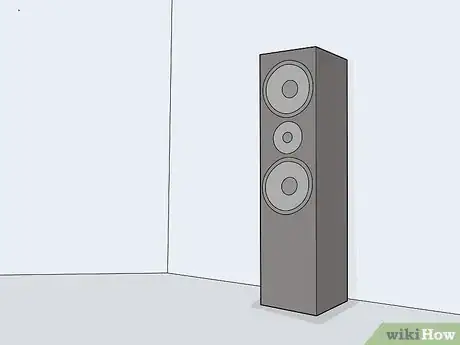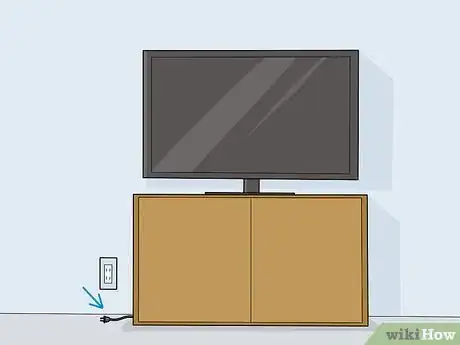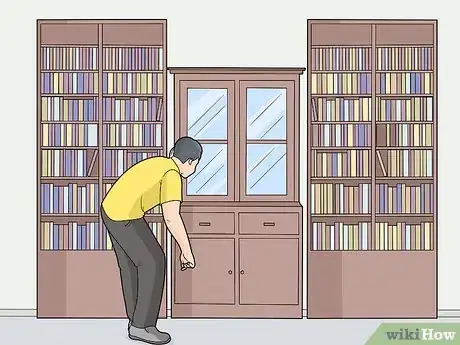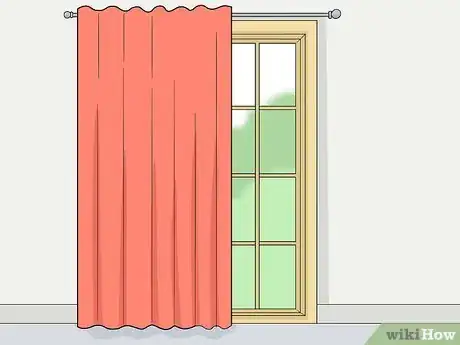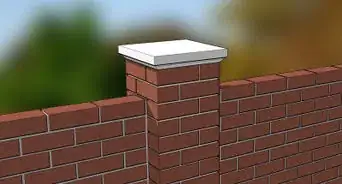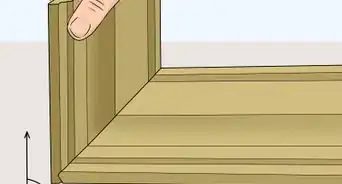This article was co-authored by Andrew Peters. Andrew Peters is an Architecture and Construction Specialist and a Principal at Peters Design-Build, a full service architecture and construction firm in the San Francisco Bay Area. With over 20 years of experience, Andrew specializes in sustainable and holistic design and building practices. Andrew holds a Bachelor of Architecture and a Project Management Professional (PMP) certification and is a Leadership in Energy and Environmental Design (LEED)-Accredited Professional. He served as Project Manager for the international-award-winning “Refract House,” Team California’s entry in the 2009 U.S. Department of Energy Solar Decathlon, a project featured in over 600 online and print articles.
This article has been viewed 23,614 times.
The downside of living in an apartment is noise. You try to stay quiet to avoid disturbing your neighbors, and you have to deal with the noise they make. While common tricks to reduce noise include adding more insulation to the walls or replacing the doors and windows, you probably can’t do these things if you’re renting an apartment. Fortunately, there are plenty of little tricks you can use to block your own sounds and prevent your neighbors’ noise from disturbing you.
Steps
Muffling Your Noise
-
1Cover hardwood floors with area rugs or carpet tiles. Hardwood floors are a huge sound amplifier, especially if someone lives below you. Reduce the sound you create by putting some area rugs around the apartment. Focus on areas that you walk a lot to muffle your footsteps.[1]
- If your floors are very noisy, put pads under the carpeting for more noise insulation.
- Putting rugs on the floor works both ways, because they can muffle sounds coming from your downstairs neighbors as well.
- As an extra courtesy, take your shoes off when you’re walking around your apartment. Shoes on hardwood floors are very noisy, especially if someone lives below you.
-
2Hang soft materials on the walls. Flat, hard walls amplify sounds coming in and leaving your apartment. The easiest thing you can do to make your room soundproof is add mass. Break up those sound waves with some soft items on the walls. Good options include canvas paintings, foam designs, or decorative fabrics. Focus on hanging these items on shared walls to prevent your noise from bothering your neighbors.[2]
- Just like with carpeting, this trick works both ways and blocks outside noise from getting in as well.
- Hard items like picture frames will also help, just not as well as softer items.
- If you don’t have any suitable items, you could also hang blankets or sheets against the wall for a similar, though less decorative, effect.
- If you're willing to do some remodeling, try using spray foam or a heavy batt insulation, such as cotton batt.
Advertisement -
3Point speakers away from shared walls or the floor. TV and surround-sound speakers cause a lot of vibrations that could bother your neighbors. Angle them so they don’t face shared walls or the floor if you live above someone. Keep them focused towards where you’d be sitting to prevent the sound from spreading.[3]
- If your speakers are built to point down and you can’t adjust them, put them on a rug or mat. This muffles their sound.
- You could also rearrange your apartment if the speakers aren’t adjustable. For example, move the TV off a shared wall to a wall that points outside.
-
4Unplug your electronics when they’re not in use to reduce hum. When multiple electronics are working in the same space, they can produce an ambient hum. Avoid the noise by unplugging all of your devices that aren’t in use. If you’re done with your computer, for example, unplug the charger.[4]
- You might not notice a hum from your devices, but it could vibrate your neighbors’ walls and disturb them. You might even subconsciously turn the TV up or talk louder to drown out the hum.
-
5Add acoustic paneling to your laundry room walls if you have one. If you have a washer and dryer in your apartment, then doing laundry will make a lot of noise. Soundproof your laundry room by hanging acoustic panels in the room. Cover all the walls for the best results.[5]
- You can buy acoustic panels online or from hardware stores.
- Acoustic panels usually attach with sawtooth hangers, which require drilling some small holes. Landlords usually allow this, but check with yours to make sure.
- If you can’t find acoustic panels, foam sections will also work. Look for pieces with ridges and face them towards the room to break up the sound.
Blocking Noise from Neighbors
-
1Place furniture against shared walls. If your neighbors are noisy, then you can block their sounds with furniture. Arrange your apartment so heavy furniture is against your shared wall. This will break up sound when it enters your apartment.[6]
- One of the best choices is a solid bookcase. If you can afford it, you can have a bookcase that covers the entire wall. A few smaller ones will also work.
- You could also place your cabinet or dresser along the shared wall. These solid pieces of furniture can block sound as well.
-
2Place plants along walls to muffle sound. If you don’t have enough furniture to block your neighbor’s noise, plants are an inexpensive alternative. Use leafy plants like anthurium, peace lily, or snake plants for the best effect. Arrange them along shared walls to muffle incoming sounds.[7]
- Place plants on your windowsills to block outdoor noise too.
- Plants will also block your sound, so they can prevent you from bothering your neighbors as well.
-
3Use heavy window drapes to block outdoor noise. A lot of noise comes in through your windows. The best way to block this out is with heavy drapes that can muffle incoming sounds. Hang these on all your windows and keep them closed at night to prevent noise from waking you up.[8]
- Many drapes advertise that they are noise-cancelling, so you’ll have plenty of choices. Look for a product that matches your décor and has good reviews for blocking sounds.
-
4Install window inserts if the outside noise is very bad. If drapes aren't enough to block outdoor noise, thick window inserts can help. There are several types. Some are just rubber inserts that plug gaps between the window and windowsill, and others are full, clear sheets that cover the whole window. Look in a hardware or home goods store for your options and follow the installation instructions that come with it.[9]
- Some window inserts block the window from opening when they're installed. If you open your windows often, make sure you get a product that doesn't block them.
- A similar, more permanent solution, is adding a line of caulk around the window border. This requires a landlord's permission, so ask them first.
-
5Use a draft blocker to fill the space under your door. If there are any gaps in your door, noise will be able to enter. Use a door draft blocker to plug that opening and prevent more sound from getting in.[10]
- Look for a product made of foam or thicker fabric to block noise. For the best results, use one that stretches under the door and extends up on the other side. Door sweeps are less effective because they only cover one side of the door, but they're better than nothing.
- This will keep heat from escaping your apartment, so you won’t have to turn your thermostat up. It also helps keep your apartment cooler in the summer.
- If there are more spaces in the door besides on the bottom, try hanging a sheet or drapes over your door to block the noise.
-
6Hang ceiling clouds to stop sound waves. Ceiling clouds are pieces of foam that block sound waves. They’re usually used in theaters, but they can also help if you have noisy upstairs neighbors. Get a pack from the hardware store and follow the installation instructions for the best results.[11]
- Check with your landlord before hanging these tools. You may need to put holes in the ceiling to attach them, so don’t do it without your landlord’s permission.
Warnings
- Always ask your landlord before making any renovations that require drilling holes or marking up walls. You could lose your security deposit if you cause any damage. When in doubt, check with the landlord.⧼thumbs_response⧽
References
- ↑ https://www.apartmenttherapy.com/how-to-block-bothersome-ambient-noises-191472
- ↑ https://www.realtor.com/advice/rent/noisy-neighbors-apartment-sound-tricks/
- ↑ https://www.apartmenttherapy.com/be-a-better-neighbor-soundproof-your-apartment-190384
- ↑ https://www.apartmenttherapy.com/how-to-block-bothersome-ambient-noises-191472
- ↑ https://www.apartmenttherapy.com/be-a-better-neighbor-soundproof-your-apartment-190384
- ↑ https://www.realtor.com/advice/rent/noisy-neighbors-apartment-sound-tricks/
- ↑ https://www.thebalancesmb.com/tips-to-reduce-noise-in-apartments-2125262
- ↑ https://www.apartmenttherapy.com/how-to-block-bothersome-ambient-noises-191472
- ↑ https://www.oldhouseonline.com/repairs-and-how-to/soundproofing-windows


